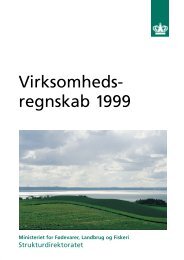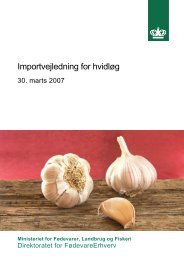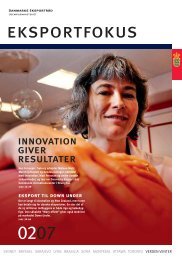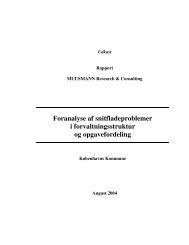Factsheet Denmark Danish Design
Factsheet Denmark Danish Design
Factsheet Denmark Danish Design
Create successful ePaper yourself
Turn your PDF publications into a flip-book with our unique Google optimized e-Paper software.
Urban floor: The floor is an element of the urban<br />
space which is often overlooked. Chance and<br />
short-term financial considerations have often<br />
been allowed to determine the nature of the surface.<br />
However, the urban floor should have a<br />
function and help clarify traffic flows to both<br />
pedestrians and drivers besides having an architectonic<br />
effect. The ideal surface is based on<br />
variation of materials, textures, patterns and<br />
Trinidad. <strong>Design</strong>: Nanna Ditzel, 1993.<br />
Manufacturer: Fredericia Furniture. Photo:<br />
nanna-ditzel-design.dk.<br />
Polyether chair. <strong>Design</strong>: Gunnar Aagaard<br />
Andersen, 1964. Photo: Pernille Klemp.<br />
X-line. <strong>Design</strong>: Niels Jørgen Haugesen, 1977.<br />
Manufacturer: Bent Krogh. – This award-winning<br />
chair is the closest <strong>Danish</strong> design gets to High<br />
Tech. Photo: bent-krogh.dk.<br />
Inspired by among others Verner<br />
Panton, Nanna Ditzel started her long<br />
career in the 1950s with bold and colourful<br />
complete environments and new ways<br />
of living. After several years in England,<br />
Nanna Ditzel returned to <strong>Denmark</strong> in<br />
1986 and in the following years created<br />
furniture with a strong personal look,<br />
which have helped renew <strong>Danish</strong> furniture<br />
design.<br />
Among the designers of the time,<br />
Gunnar Aagaard Andersen had a special<br />
position. He was the artist and<br />
Renaissance man, who as a designer was<br />
primarily known for his polyether chair<br />
from 1964, whose extreme look has<br />
inspired today’s young <strong>Danish</strong> designers.<br />
<strong>Danish</strong> furniture design 1970-1980<br />
<strong>Danish</strong> furniture design struggled to<br />
6<br />
colours. The urban floor can be a work of art,<br />
like Amagertorv in Copenhagen created by the<br />
artist Bjørn Nørgaard. However, less will do, as<br />
long as attention is paid to the context and the<br />
connection with the surrounding buildings and<br />
open spaces. Photo: Troels Heien.<br />
maintain its leading position in the 1970s<br />
and 1980s. The world had changed.<br />
Industrialisation had taken hold and was<br />
expanding rapidly. Light <strong>Danish</strong> and<br />
Scandinavian design had many followers,<br />
but many others called for something that<br />
was more in keeping with the times and<br />
with the suddenly exploding youth culture.<br />
The international design scene was<br />
characterised by fierce competition and<br />
activity – especially within furniture<br />
design. In the 1980s, Post-Modernism<br />
was introduced and, in parallel, the<br />
Memphis movement in Milan. Slightly<br />
later, the High Tech style and other trends<br />
followed. <strong>Danish</strong> restraint and focus on<br />
function therefore struggled in the international<br />
competition. A few <strong>Danish</strong><br />
designers hesitantly attempted the new<br />
trends, but most found it difficult to<br />
either develop their heritage or liberate<br />
themselves from it.<br />
<strong>Danish</strong> furniture design therefore experienced<br />
little renewal in these years and<br />
manufacturers and producers likewise<br />
showed little response to or interest in<br />
experimentation. The talents of the time<br />
were relatively isolated compared with the<br />
fertile climate surrounding the pioneers in<br />
the 1950s.<br />
Industrial design<br />
<strong>Danish</strong> furniture design may have had a<br />
relatively quiet time in the 1970s and<br />
1980s but industrial design, by contrast,<br />
was very active.<br />
Concurrently with the international<br />
industrialisation, the first industrial design<br />
trends appeared in Europe and the USA.<br />
In Germany, the Bauhaus school was<br />
established in 1919, combining art and<br />
technology with functionality and a simple<br />
idiom. In the early 1940s, a kind of<br />
streamlined Modernism emerged in the<br />
USA. Here design had to be spectacular<br />
–“styling” had to seduce and tempt people<br />
to buy.<br />
Margrethe Bowl. <strong>Design</strong>: Bernadotte & Bjørn<br />
Industridesign, 1950. Manufacturer: Rosti.<br />
Photo: rosti-housewares.dk

















